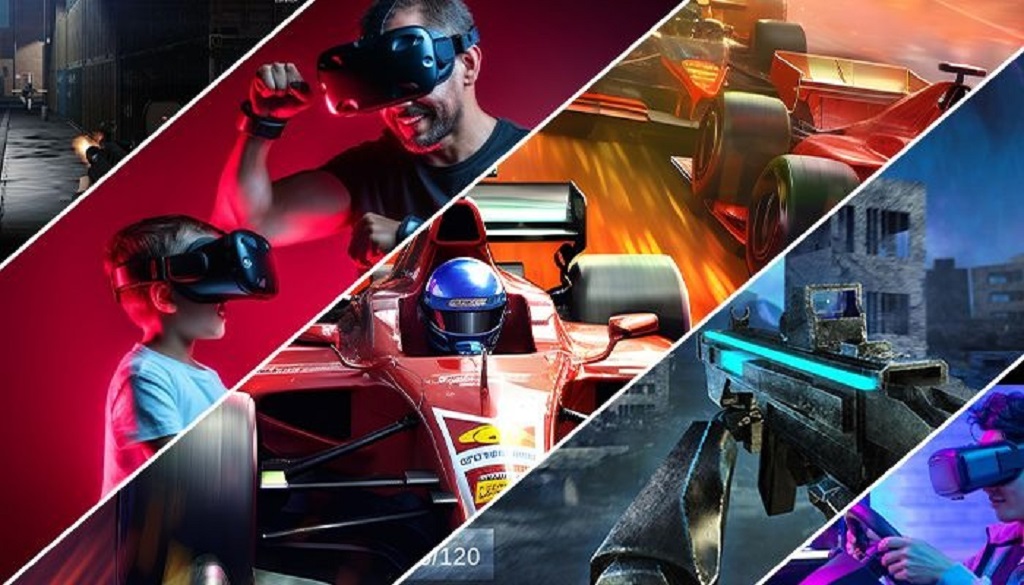Virtual Reality (VR) has emerged as a transformative force in the gaming industry, redefining the boundaries of immersive experiences. By simulating a three-dimensional environment that users can interact with, VR has opened a new realm of possibilities for gamers, blurring the lines between the virtual and real worlds. This article explores the profound impact of VR on gaming experiences, examining its influence on immersion, engagement, and the overall landscape of the gaming industry.
A Leap in Immersion
One of the most significant impacts of VR on gaming is its ability to deliver an unprecedented level of immersion. By enveloping users in a virtual environment, VR creates a sense of presence that traditional gaming platforms simply cannot replicate. Players are no longer passive observers but active participants within the game world, their actions and movements directly influencing their virtual surroundings.
This heightened sense of immersion leads to a more profound connection with the game, fostering a deeper level of engagement and emotional investment. Players feel as if they are truly inhabiting the game world, experiencing its sights, sounds, and sensations firsthand. This immersive quality enhances the overall gaming experience, making it more captivating and memorable.
Read More Also: Why is It Important to Learn About Cybersecurity?
Unparalleled Engagement
VR’s ability to immerse players in a virtual environment translates to unparalleled levels of engagement. The interactive nature of VR games demands players’ full attention and active participation, blurring the lines between the game and reality. This level of engagement fosters a sense of flow, where players become so absorbed in the game that they lose track of time and their surroundings.
Moreover, VR games often incorporate physical movements and gestures, further enhancing the sense of immersion and engagement. Players can duck, dodge, and lean to avoid virtual obstacles, creating a more visceral and interactive experience. This physical element adds a new dimension to gameplay, making it more dynamic and exciting.
Redefining Game Design
The advent of VR has also spurred a wave of innovation in game design. Developers are no longer constrained by the limitations of traditional gaming platforms, free to explore new mechanics and interactions that leverage the unique capabilities of VR. This has led to the emergence of new genres and gameplay experiences that were previously unimaginable.
For example, VR has opened new avenues for exploration and adventure games, allowing players to traverse vast virtual landscapes and interact with their surroundings in unprecedented ways. Similarly, VR has revolutionized the simulation genre, offering realistic and immersive experiences in various fields, from aviation and driving to healthcare and education. The impact of VR can even be seen in games like Black and White 3, where the immersive environment enhances the player’s experience. To learn more about the development and features of this game, you can visit https://www.imghaven.com/fun-and-games/all-about-black-and-white-3-game/.
Social Connections and Multiplayer Experiences
VR has also fostered new forms of social interaction and multiplayer experiences. Virtual reality platforms enable players from around the world to connect and interact in shared virtual spaces, creating new opportunities for collaboration, competition, and social bonding.
Multiplayer VR games allow players to team up and tackle challenges together, fostering a sense of camaraderie and shared accomplishment. Virtual reality platforms also offer social spaces where players can gather, chat, and explore virtual environments together, creating new communities and friendships.
The Future of VR Gaming
As VR technology continues to evolve, its impact on gaming experiences is only set to grow. Advancements in graphics, motion tracking, and haptic feedback promise to further enhance the sense of immersion and realism, blurring the lines between the virtual and real worlds even further.
Moreover, the integration of artificial intelligence and machine learning into VR games has the potential to create more dynamic and responsive experiences, adapting to players’ actions and preferences in real-time. This could lead to more personalized and engaging gameplay, catering to individual players’ unique tastes and skill levels.
In conclusion, virtual reality has ushered in a new era of immersive gaming experiences, redefining the boundaries of engagement and interaction. By enveloping players in virtual environments, VR creates a sense of presence that traditional gaming platforms simply cannot replicate. This heightened sense of immersion leads to deeper levels of engagement, emotional investment, and overall enjoyment.
As VR technology continues to advance, its impact on gaming experiences is only set to grow. The future of VR gaming holds endless possibilities, promising to deliver even more captivating and immersive experiences that blur the lines between the virtual and real worlds further. From exploration and adventure to simulation and social interaction, VR has the potential to revolutionize the gaming industry, offering new genres, gameplay mechanics, and forms of engagement that were previously unimaginable.






